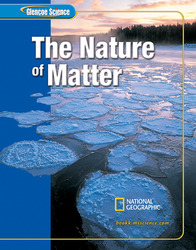1.
<a onClick="window.open('/olcweb/cgi/pluginpop.cgi?it=jpg::::/sites/dl/free/0078617650/161383/675_343_q1_q2_q3.jpg','popWin', 'width=NaN,height=NaN,resizable,scrollbars');" href="#"><img valign="absmiddle" height="16" width="16" border="0" src="/olcweb/styles/shared/linkicons/image.gif"> (16.0K)</a>
A) 36 B) 48 C) 72 D) 84 2.
<a onClick="window.open('/olcweb/cgi/pluginpop.cgi?it=jpg::::/sites/dl/free/0078617650/161383/675_343_q1_q2_q3.jpg','popWin', 'width=NaN,height=NaN,resizable,scrollbars');" href="#"><img valign="absmiddle" height="16" width="16" border="0" src="/olcweb/styles/shared/linkicons/image.gif"> (16.0K)</a>
A) liquid B) plasma C) gas D) solid 3.
<a onClick="window.open('/olcweb/cgi/pluginpop.cgi?it=jpg::::/sites/dl/free/0078617650/161383/675_343_q1_q2_q3.jpg','popWin', 'width=NaN,height=NaN,resizable,scrollbars');" href="#"><img valign="absmiddle" height="16" width="16" border="0" src="/olcweb/styles/shared/linkicons/image.gif"> (16.0K)</a>
A) 48 B) 36 C) 72 D) 84 4.
A) Cathode rays were bent toward a magnet. B) Cathode rays glowed a greenish color. C) A beam of light traveled from a cathode to an anode. D) A beam of light produced a shadow on the anode. 5.
A) conductivity B) malleability C) ductility D) luster 6.
A) hydrogen B) beryllium C) lithium D) sodium 7.
<a onClick="window.open('/olcweb/cgi/pluginpop.cgi?it=gif::::/sites/dl/free/0078617650/161383/675_37_q7.gif','popWin', 'width=NaN,height=NaN,resizable,scrollbars');" href="#"><img valign="absmiddle" height="16" width="16" border="0" src="/olcweb/styles/shared/linkicons/image.gif"> (18.0K)</a>
A) passed through, little deflection B) absorbed by the foil C) passed through, deflected to sides D) ricocheted back toward the source 8.
A) 0, 1, 2 B) 1, 2, 3 C) 1, 1, 1 D) 1, 2, 2 9.
2 O2 mean?A) 12 hydrogen and 12 oxygen atoms B) 2 hydrogen and 2 oxygen atoms C) 6 hydrogen and 6 oxygen atoms D) 12 hydrogen and 2 oxygen 10.
A) electrons B) protons C) neclei D) neutrons





